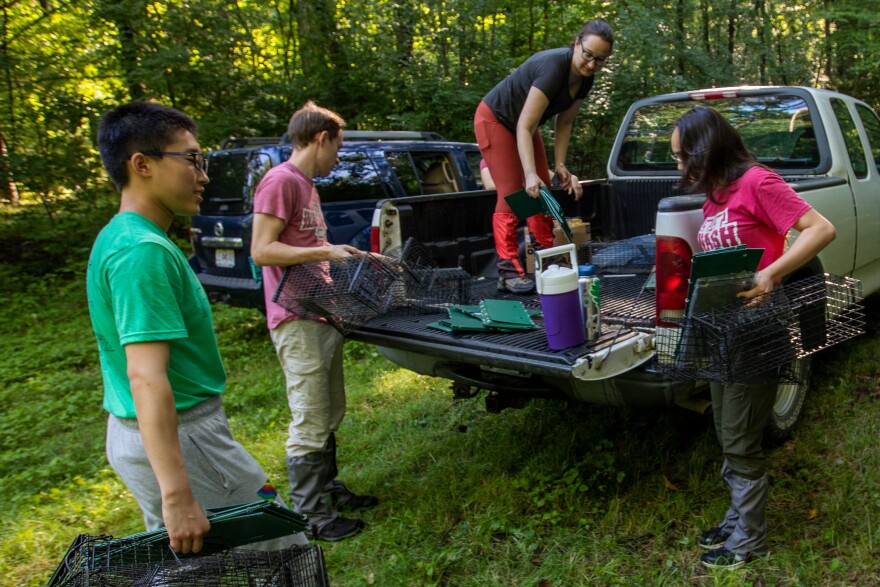New research suggests that the Delmar Divide, a socioeconomic and racial dividing line in St. Louis, not only separates people, it segregates wildlife.
“We think of wildlife as removed from humans — because they're wildlife — [but] they're not, in fact, removed from humans,” said St. Louis scientist Elizabeth Carlen. “They're living with us, alongside us, and the things that we are doing as humans are having impacts.”
The Washington University postdoctoral fellow’s research on how human-driven changes to urban environments shape the evolution of wildlife was recently published in the journal Nature Cities. Her study of some of St. Louis’ most common residents, eastern gray squirrels, demonstrates the phenomenon.

“We're finding pretty significant [genetic] differences in north city squirrels versus south city squirrels,” Carlen said, adding that these are preliminary findings that are not yet published. “We were very surprised by this, and so we're continuing to test our models to make sure that is real and not just an accident of sampling.”
The way refuse is handled differently north and south of Delmar Boulevard could be a major factor in how life is different for squirrels on either side of the road. Squirrels are known dumpster divers, so the food that humans have access to affects the diets of squirrels.
“Where our food deserts are in St Louis — where we don't have access to fresh food — that's obviously having downstream effects on the wildlife,” Carlen said. “[And] the trash is overflowing [in north St. Louis], likely because the dumpsters aren't picked up as frequently.”
Carlen’s research on St. Louis squirrels is four years old — about the same time as the lifespan of a squirrel — so she is not yet seeing how the genetic differences of north and south city squirrels may affect their behavior, appearance or other indicators of evolution. However, she said, evolutionary processes can happen surprisingly fast, especially in species with rapid reproduction. Genetic drift among squirrels can occur in just a few decades.
“If I continue this research over the next 20, 30, 40 years, we could start to see some really interesting differences,” she said.
To learn more about how a city’s politics affects its wildlife, listen to St. Louis on the Air on Apple Podcasts, Spotify, YouTube or click the play button below.
“St. Louis on the Air” brings you the stories of St. Louis and the people who live, work and create in our region. The show is produced by Miya Norfleet, Emily Woodbury, Danny Wicentowski, Elaine Cha and Alex Heuer. Darrious Varner is our production assistant. The audio engineer is Aaron Doerr.







